#Arthur Sedgwick
Text
Ravenloft headcanons:
Both Rudolph and Erasmus van Richten are really good at trick shots. (It’s a skill that comes in handy surprisingly often.)
Alanik had a habit of pacing the room while in deep thought. This habit resulted in wearing pathways in the floor. Being wheelchair bound did not stop this habit.
Ez has terrible taste in romantic partners.
The only things Strahd is still capable of feeling genuine affection for are his nightmare and the bats that hang out in his castle.
Azalin Rex is a giant troll and was allowed by the dark powers to escape Darkon because he only ever wants to fuck with people and doesn’t actually do anything truely “evil”… anymore.
Alanik gets super excited when people try to kill him. It’s his favorite part of working a case because it’s an indicator that he’s close to the truth. He’s always deeply disappointed when it doesn’t happen. Arthur is usually terrified by his excitement but has slowly become accustomed to it.
Erasmus (as a ghost) enjoys making his loved ones laugh and it always confuses the hell out of his father.
Erasmus has a suspiciously fey-like affinity with animals. When he was alive, he’d befriended a flock of ravens. He even kept one as a pet. A one-eyed “hell bird” named Hades who had a habit of biting Rudolph for no particular reason. After Erasmus died, Hades stayed with Rudolph for almost 20 years before dying of natural causes.
Rudolph makes dad jokes. He actually has a rather dry sense of humor and is surprisingly funny if you can get him to open up.
If Erasmus is resurrected, Gennifer and Laurie smother him with an almost embarrassing amount of affection though he isn’t shy about reminding them that their “little cousin” is roughly 20 years older than they are. They do not care.
When the detective duo first started their relationship, it was Alanik who made the first move (spurred by Erasmus), causing Ez to lose a bet with Rudolph. Later Arthur proposed using a puzzle box.
Ez and Erasmus both have a massive sweet tooth.
Arthur has in-depth conversations with the corpses he autopsies and sometimes even tries to involve Alanik in said conversations. Alanik finds this practice entirely bizarre but deeply insightful.
(Part 2)
#van richten's guide to ravenloft#erasmus van richten#rudolph van richten#ezmerelda d'avenir#azalin rex#strahd von zarovich#alanik ray#arthur sedgwick#dnd npcs#headcanon#d&d shenanigans#i’m just having fun
75 notes
·
View notes
Text

Movie Odyssey Retrospective
The Phantom of the Opera (1925)
By the time French journalist-turned-novelist Gaston Leroux published Le Fantôme de l'Opéra as a serial in 1909, he was best known for his detective fiction, deeply influenced by Sir Arthur Conan Doyle and Edgar Allan Poe. The Phantom of the Opera plays out like a Poe work – teeming with the macabre, painted with one character’s fanatic, violent lust. In serial form and, later, as a novel, Leroux’s work won praise across the West. One of the book’s many fans was Universal Pictures president Carl Laemmle who, on a 1922 trip to Paris, met with Leroux. While on the trip, he read Phantom (a copy gifted to him by Leroux) in a single night, and bought the film rights with a certain actor already in mind.
Laemmle’s first and only choice for the role of the Phantom was about to play Quasimodo in Universal’s 1923 adaptation of Victor Hugo’s The Hunchback of Notre Dame. That actor, Lon Chaney, had subsisted on bit roles and background parts since entering into a contract with Universal in 1912. Chaney, who was about to sign a contract with Metro-Goldwyn-Mayer (MGM), became an instant sensation the moment The Hunchback of Notre Dame hit theaters. Audiences and critics in the early 1920s were simultaneously horrified at the sight of his Quasimodo yet, crucially, felt a profound empathy towards the character.
In his prior films, as well as Hunchback, Chaney separated himself from his fellow bit actors with a skill that almost no other actor in Hollywood possessed: he was also a makeup artist. At this time, actors applied their own makeup – often simple cosmetics or unconvincing facial hair. None of the major Hollywood studios had makeup departments in the early 1920s, and it would not be until the 1940s that each studio had such a department. Chaney, the son of two deaf and mute adults, was also a master of physical acting, and could expertly use his hands and arms to empower a scene. Though already bound for MGM, Chaney could not possibly pass up the role of Erik, the Phantom. Despite frequent clashes with director Rupert Julian (1923’s Merry-Go-Round and 1930’s The Cat Creeps; despite being Universal’s most acclaimed director at this time, Julian was either sacked or walked away mid-production), Chaney’s performance alone earned him his place in cinematic history and, for this film, an iconic work of horror cinema and silent film.
As the film begins, we find ourselves at the Palais Garnier, home of the Paris Opera. The Opera’s management has resigned, turning over the Palais Garnier to new ownership. As the ink dries on the contract and as the previous owners depart, they warn about a Phantom of the Opera, who likes sitting in one of the box seats. Soon after, prima donna Carlotta (Virginia Pearson) receives a threatening letter from the Phantom. She must step aside and allow a chorus girl, Christine Daaé (Mary Philbin), sing the lead role in Charles Gounod’s Faust. If she refuses to comply, the Phantom promises something horrific. Aware of the letter, Christine the next day confers with her loved one, the Vicomte Raoul de Chagny (Norman Kerry), that she has been receiving musical guidance from a “Spirit of Music”, whom she has heard through the walls of her dressing room. Raoul laughs this off, but a series of murderous incidents at that evening’s production of Faust is no laughing matter. Christine eventually meets the shadowy musical genius of the Phantom, whose name is Erik (Chaney). In his subterranean lair, he professes his love to her – a love that will never die.
Rupert Julian’s The Phantom of the Opera also stars Arthur Edmund Carewe as the Inspector Ledoux (for fans of Andrew Lloyd Webber’s musical version, this is the Madame Giry character); Gibson Gowland as Simon Buquet; and John St. Polis as Raoul’s brother, the Comte Philippe de Chagny.
Before extoling this film, one has to single out Mary Philbin and Norman Kerry as the glaring underperformers in this adaptation. Philbin would become a much better actress than she displays here, if The Man Who Laughs (1928) is any indication. Yet, Philbin’s Christine is a blank slate, devoid of much personality and interest. It also does not help that Norman Kerry plays Raoul in a similar fashion. Raoul, in any adaptation of Phantom, tends to be a boring role. But goodness me, for a B-actor who was acclaimed for his tall, dark, and handsome looks and screen persona, he is a charisma vacuum here. During Kerry’s more intimate scenes with Philbin, you may notice that Kerry has a case of “roving hands” when he gets close with Philbin. Philbin, who could not visibly react to these moments on-camera, surreptitiously took Kerry’s hands and held them there to stop the touching.
Philbin is much better when sharing the screen opposite Chaney. Chaney and Philbin both could not stand director Rupert Julian – whom both actors, as well almost all of the crew, regarded as an imposing fraud who knew little about making art and more about how to cut costs (Laemmle appointed Julian for this film in part due to Julian’s reputation for delivering work under budget). There are unconfirmed accounts that after Julian’s departure or removal from Phantom, Chaney himself directed the remainder of the shoot aside from the final climactic chase scene (which was the uncredited Edward Sedgwick’s responsibility). In any case, Philbin’s terror when around Chaney was real. The sets of the Phantom’s lair reportedly spooked her – the subterranean waterways, his inner sanctum. Philbin also received no preparation before the filming of what is now one of the signature moments of the silent film era and all of horror cinema. Her reaction to Lon Chaney’s self-applied makeup – meant to appear half-skin, half-skeletal – was the first time that she saw Chaney’s Phantom in all his gruesomeness. Philbin, freed of the innocent, pedestrian dialogue of the film’s opening act, gifts to the camera one hell of a reaction, fully fitting within the bounds of silent film horror.
There are conflicting records on how Chaney achieved the Phantom’s final appearance. The descriptions forthcoming are the elements that freely-available scholarship generally accepts as true. It appears that Chaney utilized a skull cap to raise his forehead’s height, as well as marking deep pencil lines onto that cap to accentuate wrinkles and his brow. He also raised his cheekbones by stuffing cotton into his cheeks, as well as placing a set of stylized, decaying dentures. Inner-nasal wiring altered the angle of his nose, and white highlights across his face contributed to his skeletal look for the cameras. Cinematographer Charles Van Enger (1920's The Last of the Mohicans, uncredited on 1925's The Big Parade) – who, other than Chaney, was one of the most familiar onset with Chaney’s makeup – claimed that the nasal wiring sometimes led to significant bleeding. Taking inspiration from Chaney’s approach to keeping the makeup artistry hidden from Philbin and others, Universal kept the Phantom’s true appearance a secret from the public and press. The studio advised movie theaters to keep smelling salts ready, in case of audience members fainting during the unmasking scene. According to popular reporting at the time, audience members did scream and faint upon the reveal; a nine-year-old Gregory Peck’s first movie memory was being so terrified of Lon Chaney’s Phantom, that he asked to sleep with his grandmother that evening after he came home.
youtube
Lon Chaney’s tremendous performance allows The Phantom of the Opera to soar. Arguably, it is his career pinnacle. Masked or unmasked, Chaney’s Phantom dominates the frame at any moment he is onscreen aside from the film’s final chase sequence. Whether glowering over Christine, majestically gesturing in silhouette, strutting down the Opera House steps during the Bal Masqué, or tucked into the corner of the frame, Chaney’s physical presence draws the audience’s eyes to whatever he is doing. The differences in posture from before and after the unmasking scene are striking – from an elegant specter to a broken, hunched figure (appearing to draw some inspiration from his experience playing Quasimodo two years earlier) seething with pent-up carnality, rage, and sorrow. Chaney’s Phantom garners the audience’s sympathy when he gives Christine the grand tour of his chambers. Look at his posture and hands when he mentions, “That is where I sleep,” and, “If I am the Phantom, it is because man’s hatred has made me so.” That Chaney can ease through these transitions and transformations – as well as a third transformation, as the Red Death during the Bal Masqué – so naturally, without a misstep, is a testament to his acting ability.
Underneath the tortured and twisted visage of a man who has committed horrific acts is a vulnerable and misguided human being. His dreams, dashed and discarded by all others, have turned to despicable means. The role of the Phantom plays brilliantly to Chaney’s genius: to have audiences sympathize with even the most despicable or despondent characters he played. Chaney accomplishes this despite this film characterizing the Phantom with less sympathy than Leroux’s original novel and the popular Andrew Lloyd Webber musical.
This is already on top of Charles Van Enger’s camerawork; the sharp editing from a team including Edward Curtiss (1932’s Scarface) Maurice Pivar (1923’s The Hunchback of Notre Dame), Gilmore Walker (1927’s Uncle Tom’s Cabin), and Lois Weber.
Weber, who in 1916 was Universal’s highest-paid director, underwent numerous financial difficulties over that decade. One of Hollywood’s first true auteurs and largely ignored in the history of film until recently, Weber formed her own production company with Universal’s assistance in 1917, off the success of Shoes (1916). Through World War I, Weber’s movies were popular until around the turn of the decade, when her “didactic” filmmaking (a result of her devout Christian upbringing) went out of style. Most visibly among Weber’s financial failures of the early 1920s, The Blot (1921) – a movie that scholars and Weber himself considered her best – flopped in theaters. After two hiatuses from filmmaking in the early 1920s, Weber was brought in to conduct the final bits of editing on The Phantom of the Opera before returning to directing under Universal.
Though none of the film’s production designers were yet to hit their peak, The Phantom of the Opera benefitted from having a soon-to-be all-star art department including James Basevi (1944’s The Song of Bernadette), Cedric Gibbons (almost any and all MGM movies from 1925 onward), and Robert Florey (1932’s Murders in the Rue Morgue). Inspired by designs sketched by French art director Ben Carré, the production design trio spared no expense to bring Carré’s illustrations to life and used the entirety of Universal’s Soundstage 28 to construct all necessary interior sets. The set’s five tiers of seating and vast foyer needed to support several hundred extras. So unlike the customary wooden supports commonplace during the silent era for gargantuan sets, The Phantom of the Opera’s set for the Palais Garnier became the first film set ever to use steel supports planted into concrete. Basevi, Gibbons, and Florey’s work is glorious, with no special effects to supplement the visuals. The seventeen-minute Bal Masqué scene – which was shot in gorgeous two-strip Technicolor (the earliest form of Technicolor, which emphasized greens and reds) – is the most striking of all, unfurling its gaudy magnificence to heights rarely seen in cinema.
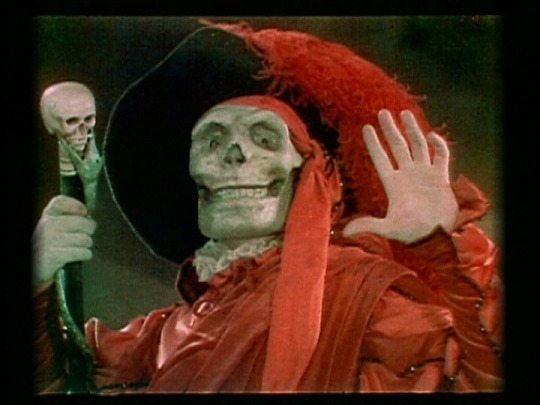
Universal’s Soundstage 28 was an integral part of the VIP tour at Universal Studios Hollywood for decades. Though the orchestra seats and the stage of the film’s Palais Garnier had long gone, the backside box seats of the auditorium remained. Stage 28 featured in numerous films after The Phantom of the Opera, including Dracula (1931), the Lon Chaney biopic Man of a Thousand Faces (1957), Psycho (1960), Charade (1963), Jurassic Park (1993), How the Grinch Stole Christmas (2000), and The Muppets (2011). The soundstage was also supposedly haunted, with individuals claiming to see a caped figure (Lon Chaney as the Phantom?) running around the catwalks, lights flickering on and off, and doors opening and closing on their own. In 2014, after standing for almost ninety years, Universal decided to demolish Stage 28 so as to expand its theme park. However, the historic set escaped the wrecking ball, as Universal decided to disassemble the set, place it into storage, and perhaps someday reassemble it. It is a fate far kinder than almost all other production design relics from the silent era.
Unlike what was coming out of Weimar Germany in the 1920s in the form of German Expressionism, American horror films had no template to follow when The Phantom of the Opera arrived in theaters. There would be no codification of American horror cinema’s tropes and sense of timing until the next decade. But without 1925’s The Phantom of the Opera, Universal would never become the house of horror it did in the 1930s through the early ‘50s (including the Dracula, Frankenstein, Mummy, Invisible Man, Wolf Man, and Creature from the Black Lagoon series). So, unbound by any unwritten guidelines, 1925’s The Phantom of the Opera – a horror film, but arguably also a melodrama with elements of horror – consumes the viewer with its chilling atmosphere and, from Lon Chaney, one of the best cinematic performances ever, without any qualification. For silent film novices, this is one of the best films to begin with (outside the comedies of Charlie Chaplin, Buster Keaton, and Harold Lloyd). Regardless of one’s familiarity with silent film, The Phantom of the Opera is a cinematic milestone.
My rating: 9.5/10
^ Based on my personal imdb rating. My interpretation of that ratings system can be found in the “Ratings system” page on my blog. Half-points are always rounded down.
For more of my reviews tagged “My Movie Odyssey”, check out the tag of the same name on my blog.
This is the twenty-third Movie Odyssey Retrospective. Movie Odyssey Retrospectives are reviews on films I had seen in their entirety before this blog’s creation or films I failed to give a full-length write-up to following the blog’s creation. Previous Retrospectives include Dracula (1931 English-language version), Oliver! (1968), and Peter Pan (1953).
#The Phantom of the Opera#Rupert Julian#Lon Chaney#Mary Philbin#Norman Kerry#Carl Laemmle#Gaston Leroux#Ernst Laemmle#Edward Sedgwick#Arthur Edmund Carewe#Gibson Gowland#Snitz Edwards#Virginia Pearson#Edward Curtiss#Maurice Pivar#Gilmore Walker#Lois Weber#silent film#TCM#My Movie Odyssey
6 notes
·
View notes
Text
observance

Pairing: Arthur Morgan x f!reader
Word Count: 1.8k
Rating: Explicit
Summary: In the quietness of a cooling summer evening, you see something you shouldn't have.
Warnings: voyeurism | masturbation (m) | a bit of swearing | reader is not a virgin but quite inexperienced
Notes: I was actually planning on posting this as part of Kinktober this year, but since I've decided to focus my time and attention more on my novel and a bit less on fics, I won't be doing Kinktober after all. However, I already finished some fics for it, and I have a few more ideas which I want to write as well. Anyway, this fic is about a young Arthur Morgan trying his luck as a farmhand.
***
He started to work at the ranch about a month ago. Mr. Sedgwick introduced him to everyone as “Mr. Arthur Morgan”. And everyone took a shine to him immediately. The other two girls in the kitchen can’t talk about anything else. The ranchers talk about his skills with horses in awe. Mrs. Sedgwick watches him from the window sometimes but closes the curtains when he looks her way. And Miss Sedgwick tries to get his attention any way she can, acting dumber around the animals than she is.
You’re quite indifferent to Mr. Morgan. He’s a hardworking man, ready to assist whenever you need help, never complains, and doesn’t let all the attention he’s getting get to his head. Whenever you two run into each other somewhere around the ranch, he tips his hat to you and greets you with a friendly, “ma’am”. When he works with the horses, you like to stand near the fence, because you love to see how gentle he is with them – gentle yet firm, and so very patient. Sometimes, when you’re alone with a dull, repetitive task, you allow your mind to wander to a memory of him astride a horse, firm thighs pressed tightly into its sides. Or you think about how he helped build the newest paddock, how he lifted up the wooden pillars, how you could see the muscles in his neck and back strain because it had been a hot day and he had taken off his shirt. You like how he uses his body with such confidence, always jumping right into a task without hesitation, and you like how he always tips his hat to you – even when he’s panting, covered in sweat and dirt, he always shoots a smile your way.
You’re not indifferent to Mr. Morgan at all, but Mr. Sedgwick has very strict rules regarding relations between his employees. He only employs single men, and only allows the women to marry farm hands from another ranch. You’re very aware nothing can ever happen between the two of you, at least nothing that God would approve of. But that doesn’t stop you from entertaining romantic notions and it most definitely doesn’t stop you from looking at him.
You have never quite felt about any man like you feel about Mr. Morgan. Growing up with three older brothers you know how crude men can often be, especially when they are talking about women. And you’ve noticed it with the other men on the ranch, you’ve seen how they look at Mr. Sedgwick’s daughter, you’ve heard them talk about his wife like she was a prized stallion waiting to be broken in by them. But Mr. Morgan is nothing but respectful toward you and the other women on the ranch. He even got in a fistfight once with one of the men who had made a particularly lewd comment about the daughter.
Today, though, is a quiet day. Mr. Sedgwick took his wife and daughter into town, and you had been given half a day off. You’d used this time to visit the horses in the stable and to watch three men try to recapture a bullock who had escaped. After dinner, you had given everyone on the farm a piece of huckleberry pie that you had baked in the morning. Mr. Morgan, of course, had accepted his slice with the usual tip of his hat and a mumbled, “Thank you, ma’am”.
And now, while the sun is slowly setting and the air is cooling down, and the other two women you share a cabin with are too loud and excited after having so much sugar, you’re using the remainder of your spare time for a brief walk around the ranch and the forest bordering it. Between the trees and the branches and the high grass, you can be yourself. No one owns you here, no one can tell you what to do, no one bothers you. You carve out these little pockets of solitude for yourself, a treat, just like the pie had been a treat for all the others. The evening light, the soft tones and long shadows, bring you relief from the busy ranch life and give you some time for quiet thinking and breathing.
Mr. Sedgwick’s property is big, and you’ve all been told not to stray too far away from its borders because most of the land beyond it is untamed, full of bears and cougars and dangerous men. But you like walking just behind the fence, between the trees where you can’t be spotted by anyone but can observe everyone else. When Mr. Sedgwick hired some new hands (Mr. Morgan included), he had them build a few more cabins some yards behind the tree line, expanding his property. It is less dangerous out here now, but it still makes you feel like you’re all alone in the world.
The new cabins are solid shadows between the trunks, dark and quiet. The men are still at the ranch, enjoying the last few rays of sunshine, the last few moments of freedom. You’ve never seen the cabins up close because there is no reason for you to come back here, so this is your chance. Curiosity gets the better of you, and you decide to have a look around, just briefly, before anyone comes back.
Some clothes hang on a line stretched between two cabins, work shirts and trousers drying in the cooling air. The porches are kept clean, although you do spot an empty whiskey bottle under one of them, and some cigarette butts on the steps of another. Wondering about what the inside looks like, how the men you’ve only interacted with briefly so far live, you make your way over to one of the windows and glance inside.
A table, some chairs, a few unmade beds – with a disappointed sigh, you turn toward the next cabin. You don’t really know what you were expecting, but it’s not this. Their lodgings don’t look any different than those you share with the other two girls who work in the kitchen. You approach the other cabin from the back, hoping to get a closer look at one of the beds and maybe some more interesting sights to observe. Do these men read? Do they have any hobbies? Will it just be more dirty clothes and unmade beds?
The darkness descends rapidly here between the trees as you approach, a small shadow melting into a much bigger one. You don’t watch your step because there is no one around, no one you need to hide from. And when you spot a window that’s cracked open, you consider, for one wild moment, to climb in and have a look around.
That is until you hear a strangled moan.
Instead of making you freeze, it makes you hurry up – someone could be in danger or trapped and you could be the only person who is able to get help and save them. You glance in through the window, into a dim cabin, and are met with the sight of the bare back of a man, sitting on his bed, hunched over. Before you can make sense of that sight, before you can even make out who he is, you hear the sound again, less breathy now, deeper, more unrestrained – a moan of pleasure.
Your face heats up and you duck, just below the window, trembling body pressing against the sturdy wood. You’ve heard those sounds before, you know what they mean, and you definitely shouldn’t be here to hear them. And yet you cannot move, pinned in place by ragged bursts of breath and faint, wet sounds.
Your heart hammers against your ribcage as you slowly stand back up again, trembling limbs almost giving way. The right thing to do would be to leave, to forget about what you saw and heard, but you cannot stop yourself from glancing back in through the window. It’s wrong, you know that, and you promise yourself you’ll leave as soon as possible, but another look won’t hurt.
His back is still turned toward the window – you can see the muscles flexing in the low light, can see the strain in his arm. You swallow drily as you feel your body react to the sight in front of you, a dull ache in the pit of your stomach, an insistent pressure between your legs. You ball your hands into fists, dig your nails into your palms, to distract yourself, to get some other sensations under your skin.
“Fuck, that’s it.”
You’d recognize that voice anywhere, even though it’s deeper than normal, strained, choked. You’ve heard it used to calm an anxious horse countless of times, to tell someone off for misplacing a rope, to laugh at a joke. And suddenly leaving is the last thing on your mind.
Arthur leans back then and you flinch away from the window, trying to become one with the shadows. His movements and yours, both your shifting positions, help you get a better look at him as he puts his weight on his left elbow, stretching his back, opening his chest. His eyes are closed in pure bliss, and it takes you a while to let your gaze wander down his chest because you’ve never seen him look so relaxed before. But when you do, you find yourself transfixed by the sight of his hand wrapped around his cock, lazily pumping himself, his hips thrusting up into his fist from time to time. You cannot take your eyes off his length, thick and swollen, shiny at the tip. You clench your fingers again, imagining it was your hand around his cock, your tight grip giving him pleasure.
“Yes, just like that.”
Those words take your breath away. You know he has no idea you’re watching him, he can’t have, but he’s only fueling your fantasy. Every tremble that wrecks through his body you feel too; your legs are shaking just as much as his naked thighs. You’re panting, dryly, painfully fast. And you know he’s thinking about someone, he has to be, and you allow yourself to imagine that he’s thinking about you, a harmless thought to indulge in.
With a deep rumble, he folds, and you see the muscles on his stomach jump and flinch impatiently. Your hands are clawing at your skirts now, gripping the fabric so tightly you doubt you’ll ever be able to let go. His thrusts are becoming desperate as he lets go of whatever restraints were still holding him back. With one final thrust, one final twist of his wrist, he comes, coating his thighs and stomach in thick, white ropes.
Everything is too tight – your dress, your skin, the air around you. Go, go, go, you urge yourself, and yet you stay, watch as he collapses on his back on the bed, eyes slowly opening to stare up at the ceiling. You shouldn’t be here, should never have stopped to watch, but you still can’t take your eyes off him, off his glistening skin, off the evidence of his pleasure.
His voice is still thick with arousal when he speaks again, yet he sounds calm and collected. “I know you’re there.”
***
arthur morgan taglist: @arsonhotchner | @cjillian97 | @imaginativefanatic | @misspearly1 | @tortor-mcgee
permanent taglist: @amneris21 | @aurelacmoon | @brettgcldstein | @chronic-nosebleed | @din-jarhead | @harriedandharassed | @jazzelsaur | @lestradeslover | @littlemissthistle | @martellthemandalor | @nyfeeer | @nobodys-baby-now | @od-ends | @pedrorascal | @radiowallet
#arthur morgan x reader#arthur morgan x you#arthur morgan#red dead redemption 2#fanfic#i just love mr morgan so there's that
234 notes
·
View notes
Text
CC's New Watch Ranking - June 2023


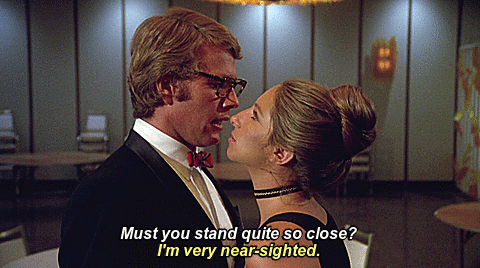
Every month on Letterboxd, I make a list of the 10 best films I’ve seen for the first time. It’s a fun way to compare movies separated in time, genre, and country of origin, and helps me keep track of what I’m watching! This is a breakdown of those films.
June! An exhausting month. We wrapped on the movie after a number of 12+ hour days. That, on top of two new jobs that picked up this month, turned June into a stressed mess for me. I spent a lot of time in bed and in the garden, trying to quiet an overstrained brain. For the first time in three years, I have seen only the 10 films on this list this month! That’s why Zaslav felt safe firing all the TCM folks, he knew I was away. But this gives me a chance to discuss some movies I wasn’t crazy about and explore why. There’s something to be learned from every film, even those that don’t please. (I am going to yadda-yadda through some entries, though.)
Click below to read the breakdown! Click HERE to view the list on Letterboxd!
10. Night Moves
1975- Arthur Penn
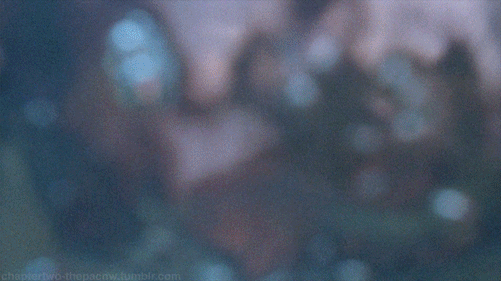
Was kind of disappointed that this didn’t move for me as it does for others! It reminded me too much of this schlocky film I watched earlier this year Stick. Stick had Burt Reynolds going to Miami to be a double-agent chauffeur for the mob. Or something. Night Moves had the exact same thing happen? Or something? Maybe that’s on me for not paying better attention.
I promised myself I would explore why this didn’t capture me. The best I got is that it’s a slow moving mystery centered on a rather boring figure. Next!
9. Bringing Up Baby
1938 - Howard Hawks
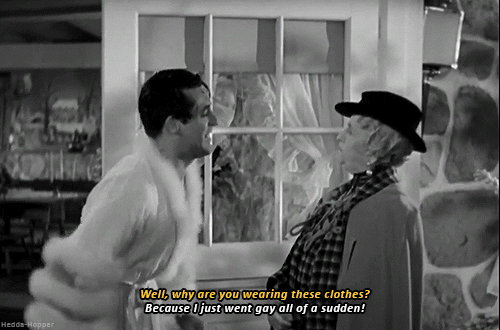
See, I heard about this movie a long time ago. Never in my life did I think the ‘Baby’ in the title was a leopard! This is a fun slapstick comedy about a man who fumbles his hot paleontologist wife for a pathologically lying Katherine Hepburn. I get it, who wouldn’t do the same in that situation, but I was surprised there wasn’t more back and forth between Hepburn and Grant’s fiance. Not quite as charming as another slapstick comedy on this list, but still immensely satisfying.
Cary Grant in a fluffy nightie? 👀 Reeks of gender.
8. Bend of the River
1952 - Anthony Mann

The river! It bends! I find myself watching a lot of pre-1955 movies while I’m doing other tasks. Cowboy flicks and noirs make great background noise. Their rhythms and plots can be so predictable that you can fall right back in if you lose attention for a few minutes. This one gripped me, though. My cinematic nemesis James Stewart plays a black hatted cowboy trying to reinvent himself, escorting a group of settlers to their new home in Oregon. The supplies they ordered don’t arrive in time, so before winter sets in he rides to find what happened to them, visiting the den of villainy and sin known as… Portland. It’s very funny to see the city depicted as a town full of drunken gold miners and thieves, when in a century it will be home to queer witches and their burlesques. (Hi Caity <3)
Fun plot, a few interesting reversals, and more colonial assumptions than I can typically stand. It’s no McCabe and Mrs. Miller, but if you’re in the mood for a PNW Western, look no further.
7. Step Brothers
2008 - Adam McKay

A movie so culturally dominant that I knew a huge amount of lines without ever having to see it. It was fun! Will Ferrell and John C. Riley have perfect comedic chemistry, and embody this strange energy of 15 year olds trapped in 40 year old bodies perfectly. The entire film works off of their performance. Just like last month’s Face/Off, two actors giving singular, unique performances is all you need to make a memorable picture.
6. Battling Butler
1926 - Buster Keaton
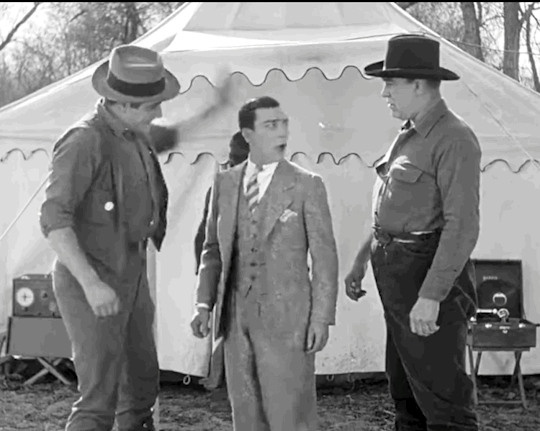
It’s Buster Keaton! It was fine. I don’t have any more interesting thoughts on him in this movie than I would have in the next one.
5. The Cameraman
1928 - Buster Keaton, Edward Sedgwick

Extremely fun. Buster doing a bit of metacommentary on how artists are valued, and the systems they have to engage with in order to find work. Extra satisfying to view amidst the writer’s strike. These studio heads would have nothing without the footage that the people on the ground capture. The Tong War battle at the end is particularly engaging. It’s the sort of Looney Tunes/Roger Rabbit comic energy that I adore, able to float through a conflict without any worry or care. Satisfying, destiny-bound ending.
4. Once Upon a Time in America
1984 - Sergio Leone
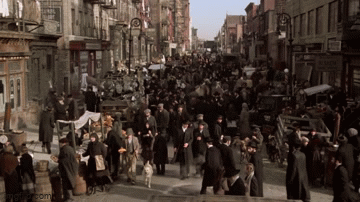
Now we get to the good stuff. Sergio Leone is synonymous with the Wild West - why is it so surprising that he would take on another classic tale of Americana? A gangster drama, an immigrant story, a distinctly East Coast experience of the twentieth century and the superpower that defined it. Where his cowboy movies focus on the mythic qualities of its protagonists - framed among giant landscapes, attention drawn to their weapons and horses - the protagonists of this film are framed within a series of relationships. It is their association with the people around them, the space between their bodies, that Leone captures so well. It is a promise of genius from a filmmaker whose career ended too early. This is a freewheeling biopic of a Lower East Side urchin who rises up towards the top, intersecting with high levels of power and upheavals in his closest bonds. Framed by an opium dream, not afraid to break free from logic, this is a masterful exploration of a cinematic space from one of our best directors.
3. Asteroid City
2023 - Wes Anderson

I feel so lucky to be alive at a time when I can see Wes Anderson movies in theaters. The sheer thrill of this opening sequence…. A black and white TV format exploding into a wide frame, desert-chic phantasmagoria, a MINIATURE TRAIN MODEL title sequence… god. Irreplaceable cinematic moments. It needs a gigantic screen to be really understood.
I think a lot of the theatre-going experience, of the crowd itself, as I remember this film. It was a great sample audience. A group of teen boys who must have just started their summer break. Several pairs of old women enjoying long-scheduled friend dates. A nuclear family. Me, alone, having made use of the Value Tuesday discounts. ($1 off hot dogs!) The whole crowd laughed throughout the thing - has Anderson ever been this funny? It made me feel a lot of hope, that an audience would take such pleasure in little background beats and quiet humor. Much of movie rhetoric paints The Audience writ-large as a bunch of mindless Marvel fans who need jokes telegraphed from a mile away. How hard the subtle humor hit really made me happy.
The story itself is something I’m going to have to meditate on. Anderson is working some meta-commentary that can be hard to grasp with only one viewing. I get the sense he’s looking at his own work and his style of directing. He’s famous for his ensembles - it’s a movie about a cast making a play. He’s famous for his invented worlds - we walk backstage and meet a writer-director who literally lives in a set after the performances are done. He’s a director beset by nostalgia for times he never lived - Jeffrey Wright says to a bunch of young geniuses, “Should have picked a better time to be born.” This is why I feel such a thrill, such satisfaction, in being alive while his movies are airing. I get to witness the years, hopefully decades, of discussion that this movie inspires. I think this is already ripe for a “Underappreciated in its time despite being his masterpiece” sort of thing.
2. Spider-Man: Across the Spider-Verse
2023 - Joaquim Dos Santos, Justin K. Thompson, Kemp Powers
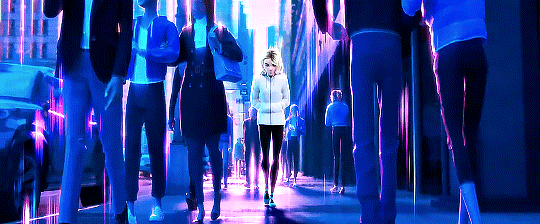
God, what a lovely film to watch. My gushing excitement for this is cut by the recent revelations about its production. I spit on the names of Lord and the names of Miller, I wish them to suffer as they have made others suffer. I think of how beautiful this film is - how every frame is a gorgeous vortex, how you could hit pause at any moment and drink in one billion details that all add up to an incredible whole. I think of the well-crafted story, the nail-biting cliff hanger, the desire I had walking out of the theatre for simply MORE. And I think of how much better this could be if the artists making it were paid more fairly and given more breaks. Look at how beautiful this movie is - IT COULD HAVE BEEN SO MUCH MORE BEAUTIFUL IF THE WORKPLACE WAS LESS TOXIC. I reject any narrative about this film that says that, somehow, all the blood sweat and tears made it what it is. No. Absolutely not. This move is what it is because of hundreds of people toiling *despite* the invented hardships. It is so symptomatic of what is wrong in Hollywood, why so many people are striking now. They are being hampered from making their work excel because of these greedy people at the top who project their insecurity and petty rage all the way down.
Anyway. I love Miles. I love Gwen. I love all my Spiderfriends. Hope to see them again some day under less toxic circumstances.
1. What’s Up, Doc?
1972 - Peter Bogdanovich
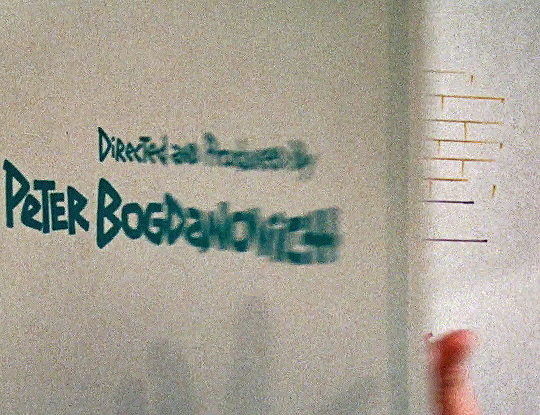
I’ve been studying the screwball comedy this year. It’s an oft-used term without a great definition. It’s got romance and laugh, it has some odd personalities… but what else? Does it need an aggressive woman? A reluctant man? Do they need to be thrust together by fate? Do you *have* to have an outstanding ensemble, or does that just happen by coincidence? As I try to pick apart these elements I watch this on a whim one day and see that Peter Bogdanovich has already done all that research and found his answer. Screwball comedy? It looks like this. It’s What’s Up, Doc?
From the old-Hollywood opening credits that’s a hand turning a book, to the delightful absurdity that is its central premise - what if a spy, a jewel thief, and some dude all had the same luggage? - everything about this is finely tuned to make you laugh. Barbara Streisand is more or less literally playing Bugs Bunny. How amazing is that? There are so many things that will make you well up laughter that I hesitate to try and explain them more. Just watch this incredibly funny, charming movie. I have a private litmus test for how good a movie is. Often I’ll watch stuff with my wife sitting next to me as she plays video games. If a movie drags her attention away from the game and keeps her locked in the whole time, that is a great film. It was that way with this. Highly recommended.
~~~~~~~~~~~~~~~
Thank you for reading! If you liked any of these thoughts feel free to follow me on Letterboxd, where I post reviews and keep meticulous track of every movie I watch. Look forward to more posts like these next month!
#movies#film#cc oc#letterboxd#movie ranking#What's Up Doc?#across the spider verse#Asteroid City#Once Upon A Time In America#The Cameraman#Battling Butler#Step Brothers#Bend of the River#Bringing Up Baby#Night Moves
3 notes
·
View notes
Text
https://www.madina.co.uk/shop/latest/1520-sedgwick-avenue-hiphop-50-anniversary-pin/
3 notes
·
View notes
Text

Isolation. Honesty. Judgement.
They will expose the truth with their own two hands.
Maybe then, they can finally feel satisfied.
Basics:
Name: Noel Laurier
Age: 26
Gender: NB (they/she)
Height: 6’2”
Orientation: Omnisexual, demiromantic
Faith: Atheist
Alignment: Neutral Good
Background:
Out of all the domains, Noel hates Dementlieu the most. If asked, they can give plenty of reasons as to why - the citizens are vapid and materialistic, and the city is built on a single grand delusion no one dares break. They never mention the family too preoccupied with socializing to care for a young girl unable to play into their deceptions.
If they did, they would have to acknowledge the scars that still linger in their mind.
Noel was saved from those years of neglect by an unlikely duo - the great detectives Alanik Ray and Arthur Sedgwick. To this day, not even she can deduce what prompted the couple to take her in as an apprentice. At the time, Noel saw it merely as an opportunity to leave the life they hated behind - their love of mysteries and deduction did not arise until after their training had started.
Noel was a fast learner, and after only a few years she was able to solve cases without any assistance. Ever grateful to the two who saw her potential, she vowed to become a renowned detective who would make them proud.
Recently learning about the resurgence of a seemingly impossible case, Noel has made it their mission to uncover the truth. She will be the first to solve this mystery - and will not appreciate anyone interfering.
Characteristics:
Befitting their role as a detective, Noel is both extremely perceptive and a skilled investigator. Though not the most charismatic, their keen insight makes up for any pitfalls they may face when interrogating others. Highly dexterous and intelligent, she takes great pride in the number of cases she has successfully solved. Noel would describe themself as logical and efficient - though many they have met would use the terms cold and calculating instead. To Noel, any emotions would only hinder their work on a case, and they strive to be as stoic as possible. Her desire to be the best in her field means she judges herself harshly, and she holds others to the same impossible standards. Straight-laced, she cannot lie to save her life - something that often comes back to bite her.
Personality Trait: I am honest to a fault, and refuse to lie.
Personality Trait: I hide any emotion I feel to appear more stoic and logical.
Ideal: Truth. Delusions and lies do nothing but harm. The truth is what will help others.
Bond: I must impress my mentors and prove myself as a worthy successor.
Flaw: I judge others harshly - but I’m even harsher with myself.
Appearance:
Noel’s appearance is something they try to think of as little as possible - years spent with a superficial family have saddled them with a negative self-image they are still learning to undo. They have hooded gray eyes with long lashes; up close, one can tell that the left is a replacement made of magic and stone. Her curly hair is silver at its roots, transitioning to a dark gray when it reaches her shoulders. Her umber skin has several moles and some light scarring from previous cases. They prefer to wear deep blues and silvers, and are never seen without the long gray coat gifted to them by Alanik and Arthur. Their only accessory is a strange walking cane, which seems to be more for decoration than anything useful.
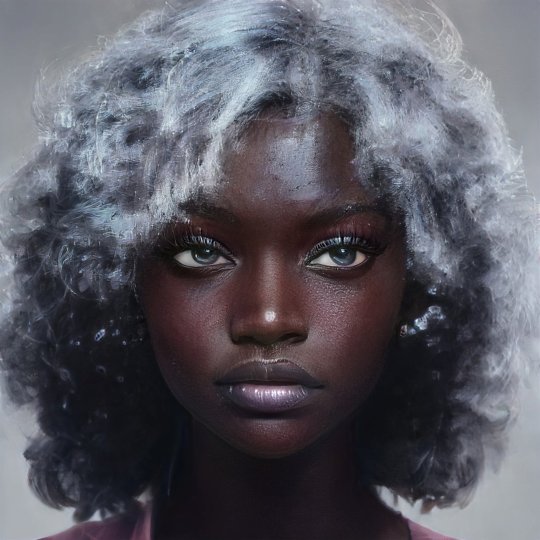
Specific content warnings for Noel’s route include: eye injury (past), loss of vision (past), and neglect.
#character introduction#characters#ro#ch: the donjon#ch: noel laurier#dread reflection#dread reflection if#artbreeder#interactive fiction
12 notes
·
View notes
Text
My media this week (18-24 Sep 2022)

ᵗʰᵉ ᵃᵘᵗᵘᵐⁿ ʷᵉᵃᵗʰᵉʳ ᵃᵖᵖᵉᵃʳˢ ᵗᵒ ᵇᵉ ʰᵉʳᵉ ᵗᵒ ˢᵗᵃʸ ᵃⁿᵈ ᶦ ᵃᵐ ᵈᵉˡᶦᵍʰᵗᵉᵈ ᵃᶠ
📚 STUFF I READ 📚
😍 👂The Sugared Game (The Will Darling Adventures #2) (KJ Charles, author; Cornell Collins, narrator) - confronting terrible family (and also a criminal gang), part one
😍 To Trust Man On His Oath (The Will Darling Adventures #2.5) (KJ Charles, author) - Will & Kim make a vow
😍 👂Subtle Blood (The Will Darling Adventures #3) (KJ Charles, author; Cornell Collins, narrator) - confronting terrible family (and also a criminal gang), part two
😍 How Goes The World? (The Will Darling Adventures #3.5) (KJ Charles, author) - delightful, indulgent coda where Archie Curtis gets to meet HIS 'heir apparent' (more or less)
🙂 A Pebble for Lewis (Alaskan Pebble Gifters #1) (Amy Bellows, author) - 37K, KU, polor bear/penguin shifter romance - did not expect this to carry thru to the mpreg & birth tbh so the extremely sexual egg-laying scene was a surprise but I ain't mad about it
😊 Majestic (Oh_i_swear, author) - 69K, Stucky - modern omegaverse royalty arranged marriage AU
😍 👂Two Rogues Make a Right (Seducing the Sedgwicks #3) (Cat Sebastian, author; Joel Leslie, narrator) - 'only one bed'; very low angst/high feelings & pining; always gives me some major shrinkyclinks vibe (which I mean in the best way possible)
😍 The Good Morrow (Hark_bananas, author; huei/Nogi/nogstalia, artists) - reread, 75K, Stucky post-WS canon divergent - Steve & Bucky find each other again through a shared dream in a diner - absolutely magical, lovely, warm, one of my absolute faves
🙂 Double Sin and Other Stories (Hercule Poirot #38) (Agatha Christie, author; Hugh Fraser/Isla Blair/Joan Hickson/Anna Massey/David Suchet/Christopher Lee/Simon Vance, narrators) - short story collection
💖💖 +139K of shorter fic so shout out to these I really loved 💖💖
[Podfic] Blind Date (aggressivewhenstartled, author; quietnight, narrator) - MCU: shrinkyclinks, 8K - great podfic of a very funny shrinkyclinks
Another for Working Days (SassySnowperson) - Much Ado About Nothing: Beatrice/Benedick/Don Pedro, 13K - what if Beatrice had said 'yes' to the Prince's offer?
Whole In Your Frame (AidaRonan) - MCU: shrunkyclunks, 15K - absolutely adore this fic with Cap!Steve and nerdy scientist Bucky
📺 STUFF I WATCHED 📺
nothing to report, watched zero things
🎧 PODCASTS 🎧
It's Been a Minute - How HBO transformed television
The Atlas Obscura Podcast - Ark Two Shelter
Shedunnit Book Club - A Prize Mystery
Switched on Pop - Lady Gaga & The Pequeños Monstruos
Vibe Check - Mercury Needs To Sit Its A$$ Down Somewhere
The Atlas Obscura Podcast - America’s “Quiet Zone”
Ologies with Alie Ward - Geology (ROCKS) Part 2 with Schmitty Thompson
Twenty Thousand Hertz+ - 1-900-20K-HRTZ
Overinvested - Ep. 269: King Arthur: Legend of the Sword
One Year - 1986: The Miracle of Cokeville
The Atlas Obscura Podcast - Libre Intentional Artist Community
Song Exploder - Panic! At the Disco - Viva Las Vengeance
Strong Songs - Strong Grooves, Vol. 1 (feat. Russ Kleiner)
Strong Songs Bonus Episodes - How Clyde Stubblefield Evolved Funk Drumming
🎶 MUSIC 🎶
The Crystal Method
"September" [Earth, Wind & Fire] radio
Butterfly: 25th Anniversary Expanded Edition [Mariah Carey]
Presenting Janet Jackson
Night Ranger
"Cissy Strut" [The Meters] radio
#sunday reading recap#bookgeekgrrl's reading habits#bookgeekgrrl's soundtracks#the will darling adventures#seducing the sedgwicks series#fanfic ftw#that much ado fic was glorious#vibe check podcast#switched on pop podcast#strong songs podcast#song exploder#20k hz podcast#the atlas obscura podcast podcast#shedunnit podcast#overinvested podcast#ologies podcast#it's been a minute podcast#one year podcast#the crystal method#earth wind and fire#mariah carey#janet jackson#night ranger#the meters#as usual some of the podcasts influenced the music selections#fan artists are a *gift*
2 notes
·
View notes
Text
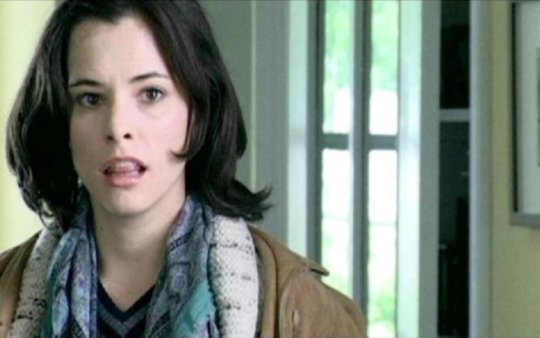
Parker Posey in Personal Velocity: Three Portraits (Rebecca Miller, 2002)
Cast: Kyra Sedgwick, Parker Posey, Fairuza Balk, John Ventimiglia (voice), Ron Leibman, Wallace Shawn, Susan Blommaert, David Warshofsky, Leo Fitzpatrick, Tim Guinee, Patti D'Arbaville, Ben Shenkman, Joel de la Fuente, Marceline Hugot, Brian Tarantina, Seth Gilliam, Lou Taylor Pucci. Screenplay: Rebecca Miller, based on her stories. Cinematography: Ellen Kuras. Production design: Judy Becker. Film editing: Sabine Hoffman. Music: Michael Rohatyn.
Having a literary celebrity like Arthur Miller for a father seems to have had a profound effect on writer-director Rebecca Miller: It surely informed the central installment of the collection of three short films she called Personal Velocity. Greta (Parker Posey) is an editor for a New York publishing house whose father (Ron Leibman) is a famous lawyer but also a bully and a philanderer. He lords it over his daughter and her husband (Tim Guinee), a fact checker at the New Yorker and an unambitious man who has been taking his time to write a dissertation for his Ph.D. When Greta achieves a measure of success in her career, she finds that it's time to discover who she is other than a daughter and a wife. Posey's fine performance gives this episode the energy and focus it needs. Similarly good performances come from Kyra Sedgwick and Fairuza Balk in the other two segments, both of which also deal with a woman at a turning point in her life. Sedgwick plays Delia, married to an abusive man (David Warshofsky), who escapes with her children to a shelter for battered women and begins a new life as a waitress. Delia has a history of using sex as a means to get even with the world, and when she finds herself giving a hand job to an unpleasant auto mechanic, she realizes she has to come to terms with her life. Balk is Paula, who is living with a man in New York City, but when she discovers she's pregnant and narrowly escapes being killed in a freak accident (we hear news reports of the accident in the other two segments), she hits the road, picking up a young hitchhiker (Lou Taylor Pucci) along the way. As with most road movies, it's a journey of self-discovery. But these stories feel more cooked-up than Greta's; they lack its verbal wit and the feeling that they come out of an internalized experience.
1 note
·
View note
Text

"TORONTO MAN APPEALS "PROHIBITIVE" TARIFF," Toronto Star. July 28, 1933. Page 1.
----
Manufacturer Tells Board Import on Collodion "Injustice" to Industry
---
Special to The Star
Ottawa, July 28. - Engravers Specialties of Toronto, manufacturers of collodion and engravers' supplies applied to the tariff board to-day for cancellation of tariff item "761-collodion."
W. E. Thorne, the applicant,through counsel, stated, "I am engaged in manufacturing collodion in bond, which carries the necessary bond fees, supervision fees and all the rest of the excise duties that go to make up a business of this nature. I am a one-man concern, returned soldier, who has tried to re-establish himself without asking any assistance from the government in any way whatever. It is this that prompts me to speak out for what I call an injustice to the government and to the manufacturers of collodion in Canada. I am prepared to list costs in Canada as compared with costs in the U.S.A. and you can judge for yourself the great Injustice being done to the government and the collodion manufacturers.
"Do you think it proper to charge a Canadian manufacturer a total of 68 cents in duties, excise and bond fees for each and every gallon of collodion sold in Canada, whereas an engraver can import collodion at a lower cost than the price of manufacture in Canada? When such collodions are imported, instead of the government getting 68 cents per gallon they get 24 cents, all included, so I leave it to you, sir, if you do not think that this item should be changed immediately.
"In an interview with the customs branch I was advised that the tariff item outlived itself when collodions first manufactured in this country, as a Canadian manufacturer should not be discriminated against, but protected. Immediately you will want to know what benefit I expect to receive if this revision was made. It is this. I only expect to be put on an equal basis with were other manufacturers. The corporation importing the majority of collodion into this country have a million-dollar plant, but it doesn't pay them to manufacture in this country, as it can be done so much cheaper in the U.S. If this material were imported under the proper tariff item which is item. No. 220 instead of No. 761, immediately you will see the benefits to the government in both excise and customs."
The board concluded the Bathurst Power and Paper Co. hearing, the case standing for further consideration.
Suggest 35 P.C.
M. J. Patton for engravers specialties said the present duties were 15 per cent. British preference, 17 1/2, intermediate and general. The applicant asked that the item be cancelled and a separate item be made carrying a higher rate of duty, and suggested 35 per cent.
It was pointed out that the duties on the raw material going into Canadian collodion were 35 per cent. of the cost while the protection given on the finished 'product was only 17 per cent. The profit was only 5 percent.
Judge Sedgwick: "From these cost figures it looks as though you could make 25 cents a gallon more profit by charging $4."
There was no opposition appearing to the application and the case closed, to be taken into consideration by the board.
Bowron Bros. Ltd., Hamilton, applied for the re-classification of ripe figs in syrup. All other figs were imported under a special item using the word "figs" while these figs were"pushed" into "fruits preserved in syrup."This fruit was brought in from California in gallon cans and thenre-packed into small containers.
"These figs are not produced in Canada," said Arthur Bowron, "and the high commissioner in London, whom we wrote, has been unable to find any of these ripe figs within the empire."
He suggested figs would be a good item to trade in the possible reciprocity pact with the United States. The present tariff was 100 per cent.and he suggested they might be allowed in duty free as a concession.
The chain groceries were selling their product but the high duty made the price to the consumer very high.
Commissioner Hebert: "Figs of this type are produced in Smyrna."
Empire Figs Salty
Mr. Bowron: "If we can get empire figs we would rather, but theyare usually packed in salt and unsuitable for what we use them."
Chairman: "For lack of imagination we often take figs on the dining car."
Mr. Bowron: "Those are the kind we put up but they are imported and cost around 40 cents."
He admitted they had only brought in three experimental shipments so far.
Chairman: "Well, what good are you going to do the country if you get the duty down. Is it going to make the figs in the train cheaper?"
Mr. Bowron: "It should."
Chairman: "If you are allowed to bring these figs free in bulk you spend $388 in Canada in wages and material and you reduce the price to the Canadian consumer."
Mr. Bowron: "Yes, ten cents a can is cheaper."
Chairman: "Then that's the whole story."
The case was taken under consideration.
The application of the Jones Tent and Awning Co., Ltd., of Vancouver, for a duty on venetian blinds was laid over, the applicants not being ready to proceed.
This completed the second session of the tariff board. The next hearing being the woollen hearing, the date of which has not been set.
#ottawa#tariff board#excise taxes#customs officials#collodion#small business ideology#small business owner#nitrocellulose#dry plate photography#collodion process#import duties#canada in the british empire#figs#great depression in canada#capitalism in canada
0 notes
Text
Final fantasy xiv lodestone thura

#Final fantasy xiv lodestone thura series#
177 David Juste PHILOSOPHICAL INTERMEZZO Aperçu sur le rôle de l’harmonie musicale dans l’œuvre de Proclus. 157 Brigitte Van Wymeersch Musical Theory and Astrological Foundations in Kepler: The Making of the New Aspects. Le cas de la vibration par sympathie chez les savants et théoriciens de la première moitié du 17e siècle. Représentation ésotérique et pensée scientifique. 109 Concetta Pennuto Tommaso Campanella (1568–1639) e la musica. Giovambattista della Porta e l’efficacia terapeutica della musica. Anthony Rooley Orpheus “Recured”: The Healing Art of Thomas Campion. Rothĭwelling in Darkness: Dowland’s Dark Songs as Hermetic Pessimist Gnosis, and Could this be ‘Evidence’ of the Esoteric ‘School of Night’?. Prophecy, Harmony, and the Alchemical Transformation of the Soul: The Key to Lasso’s Chromatic Sibyls. Le médecin et les sons : Musique et magie dans Le Livre des eschez amoureux moralisés d’Évrart de Conty. Laurence WuidarĮARLY MODERN OCCULT KNOWLEDGE AND MUSIC Music and Magnetism, from Abu Ma‘shar to Kircher. printed in the netherlandsĬONTENTS Acknowledgements. Authorization to photocopy items for internal or personal use is granted by Brill provided that the appropriate fees are paid directly to The Copyright Clearance Center, 222 Rosewood Drive, Suite 910, Danvers, MA 01923, USA. No part of this publication may be reproduced, translated, stored in a retrieval system, or transmitted in any form or by any means, electronic, mechanical, photocopying, recording or otherwise, without prior written permission from the publisher. Koninklijke Brill NV incorporates the imprints Brill, Hotei Publishing, IDC Publishers, Martinus Nijhoff Publishers and VSP. ISSN 1871-1405 ISBN 978 90 04 18267 7 Copyright 2010 by Koninklijke Brill NV, Leiden, The Netherlands. English (chiefly) some articles in French or Italian, with English summaries. Texts and studies in Western esotericism) Includes index. Library of Congress Cataloging-in-Publication Data Music and esotericism / edited by Laurence Wuidar. Roland edighoffer – antoine faivre olav hammer – andreas kilcher arthur mccalla – monika neugebauer-wölk mark sedgwick – jan snoek michael stausberg – györgy szőnyi garry trompfĬover illustration: Detail from “Aurora consurgens”, Zurich Zentralbibliothek (MS. Jean-Pierre Brach Nicholas Goodrick-Clarke Wouter J.
#Final fantasy xiv lodestone thura series#
Aries Book Series Texts and Studies in Western Esotericism

0 notes
Text

LOBBY BAR - Hotel Chelsea
I came to the new/old Lobby Bar at the Hotel Chelsea a couple of weeks ago and became an immediate ‘regular’.
Formerly known as the Chelsea Hotel it was originally built in 1888, and over its very long history had become a legendary place. The people who have passed through or lived at the Chelsea Hotel have contributed to culture as we know it today:
Bob Dylan, Janis Joplin, Robert Mapplethorpe, Patti Smith, Leonard Cohen, Arthur Miller, Edie Sedgwick, Jimi Hendrix, Sid Vicious, Jack Kerouac, Mark Twain and the list goes on and on.
The building had become worn and tired and the owners sold to folks who wanted to do a makeover of the very old building around a plethora of full time residents.
Some ten years later, the current owners (I think it changed hands a couple of times since construction began) seem to see a light at the end of the tunnel, I just hope the lights remain dimmed and the building will retain a spirit will continue to honor a remarkable history.
The vibe of the Lobby Bar is totally on my wave length - discreet comfortable spacious old world and sophisticated with a great mix of people. My friends with whom I have shared the Lobby Bar are all ‘regulars’ now too!
My endlessly entertaining friend, photographer and bon vivant, Jeffrey Rothstein, was my mate tonight, and of course like me, had already become a ‘regular’.
Tonight’s libation? A perfectly prepare Manhattan in the perfect stemware!
If you stop by, the guy at the bar who looks like me, just might be me!
#lifeisgood #manhattanstilhasit #jeffreyrothstein #glenngisslerdesign #manhattanup
0 notes
Note
(Might be returning from hiatus)
What can you tell me about Dr. Arthur Sedgwick?
Dr. Arthur Sedgwick is known to have been the author chronicling the many adventures and mysteries investigated by his husband, Detective Alanik Ray.
If that sounds like Sherlock Holmes for some reason, it should.
Sedgwick became quite protective of his husband (*then fiancé) after a case involving a shapeshifter wherein Ray fell (or was more likely thrown) from a roof. The fall probably should’ve been the end of the detective but he lived and the two married soon after.
*Arthur is soft spoken and patient but he’s also a formidable fighter and deceptively bold.
*these points are headcanon.
6 notes
·
View notes
Video
youtube
o fantasma da opera c c domínio publico #filmeantigo #filmemudo #film...
O Fantasma da Ópera (1925) O Fantasma da Ópera é um filme de terror americano de 1925, adaptação do filme O Fantasma da Ópera de Gaston Leroux. Foi dirigido por Rupert Julian e estrelou Lon Chaney, Sr no papel-título do Fantasma deformado que assombra o Palais Garnier, causando assassinato e caos na tentativa de fazer da mulher que ele ama uma estrela. O filme permanece mais famoso pela maquiagem medonha e auto-criada de Chaney, que foi mantida em segredo do estúdio até a estreia do filme. A imagem também apresenta Mary Philbin, Norman Kerry, Arthur Edmund Carewe, Gibson Gowland, John St. Polis e Snitz Edwards. O último membro do elenco sobrevivente foi Carla Laemmle (1909-2014), sobrinha do produtor Carl Laemmle, que desempenhou um pequeno papel como "primeira bailarina" no filme quando ela tinha cerca de 15 anos. A adaptação cinematográfica de Elliott J. Clawson, Tom Reed (roteirista) e Raymond L. Schrock e foi dirigida por Rupert Julian e com direção suplementar de Lon Chaney e Edward Sedgwick. http://publicdomainmovies.net/movie/the-lost-world Public Domain c c
0 notes
Conversation
U.S. Daily High Temperature Records Tied/Broken 4/23/22
Unincorporated Adams County, Colorado: 88 (previous record 86 1989)
Unincorporated Crowley County, Colorado: 92 (previous record 90 1989)
Denver, Colorado: 87 (previous record 85 1989)
Dillon, Colorado: 67 (also 67 1954)
Greeley, Colorado: 87 (also 87 2012)
Holyoke, Colorado: 92 (previous record 90 1989)
John Martin Reservoir State Park, Colorado: 92 (previous record 90 1965)
Lakewood, Colorado: 84 (also 84 1989)
Unincorporated Larimer County, Colorado: 85 (previous record 84 1989)
Unincorporated Las Animas County, Colorado: 86 (previous record 85 2006)
Unincorporated Lincoln County, Colorado: 89 (previous record 85 1989)
Longmont, Colorado: 91 (previous record 88 1989)
Northglenn, Colorado: 87 (previous record 85 2006)
Pawnee National Grasslands, Colorado: 88 (previous record 87 1989)
Unincorporated Pueblo County, Colorado: 89 (previous record 87 1989)
Unincorporated Sedgwick County, Colorado: 93 (previous record 85 1994)
Walsenburg, Colorado: 85 (previous record 82 2006)
Unincorporated Washington County, Colorado: 89 (previous record 87 1989)
Unincorporated Washington County, Colorado: 88 (previous record 84 1989)
Wheat Ridge, Colorado: 85 (previous record 84 1989)
Yuma, Colorado: 93 (previous record 87 1994)
Unincorporated Yuma County, Colorado: 90 (previous record 89 1989)
Unincorporated Adams County, Illinois: 85 (also 85 1980)
Gilmer Township, Illinois: 85 (previous record 84 1960)
Shelbyville, Illinois: 81 (also 81 2001)
Ft. Wayne, Indiana: 84 (also 84 1960)
Muncie, Indiana: 85 (previous record 84 1985)
Richmond, Indiana: 83 (previous record 81 2001)
Wabash, Indiana: 87 (also 87 1925)
West Lafayette, Indiana: 83 (previous record 80 1985)
Allerton, Iowa: 80 (previous record 78 1915)
Lamoni, Iowa: 84 (also 84 1990)
Atwood, Kansas: 97 (previous record 96 1989)
Norton, Kansas: 91 (previous record 89 1965)
Cascade Charter Township, Michigan: 82 (previous record 79 1985)
Norton Shores, Michigan: 80 (also 80 1985)
St. Louis, Missouri: 87 (previous record 86 2009)
Arthur, Nebraska: 93 (also 93 1989)
Cambridge, Nebraska: 98 (previous record 93 1989)
Culbertson, Nebraska: 95 (also 95 1939)
Curtis, Nebraska: 94 (previous record 93 1939)
Elgin, Nebraska: 89 (previous record 87 1990)
Franklin, Nebraska: 87 (previous record 85 2009)
Unincorporated Gosper County, Nebraska: 93 (previous record 90 1989)
Greeley Center, Nebraska: 90 (also 90 1989)
Unincorporated Hayes County, Nebraska: 94 (previous record 93 1939)
Unincorporated Hitchcock County, Nebraska: 95 (also 95 1989)
Unincorporated Hooker County, Nebraska: 92 (previous record 89 1939)
Imperial, Nebraska: 94 (previous record 90 1939)
Unincorporated Keith County, Nebraska: 92 (previous record 89 1939)
Unincorporated Keya Praha County, Nebraska: 97 (previous record 94 1989)
Unincorporated Logan County, Nebraska: 96 (previous record 85 2000)
North Platte, Nebraska: 94 (previous record 93 1989)
Ogallala, Nebraska: 94 (previous record 93 1989)
Unincorporated Sandoval County, New Mexico: 86 (previous record 85 1994)
Findlay, Ohio: 87 (previous record 86 1960)
Monclova Township, Ohio: 88 (previous record 86 1985)
West Mifflin, Pennsylvania: 84 (previous record 83 2001)
Alexandria, South Dakota: 92 (also 92 1939)
Gregory, South Dakota: 93 (previous record 88 2009)
Bristol, Tennessee: 87 (also 87 1980)
Mt. Juliet, Tennessee: 83 (also 83 1999)
Unincorporated Brewster County, Texas: 104 (previous record 103 2011)
Unincorporated Jeff Davis County, Texas: 91 (also 91 2006)
Unincorporated Wayne County, West Virginia: 88 (also 88 2001)
#U.S.A.#U.S.#Colorado#1980s#1950s#1960s#1990s#Illinois#Indiana#1920s#Iowa#1910s#Kansas#Nebraska#1930s#New Mexico#South Dakota#Tennessee#Texas#West Virginia#Missouri#Pennsylvania#Ohio#Michigan
0 notes
Photo
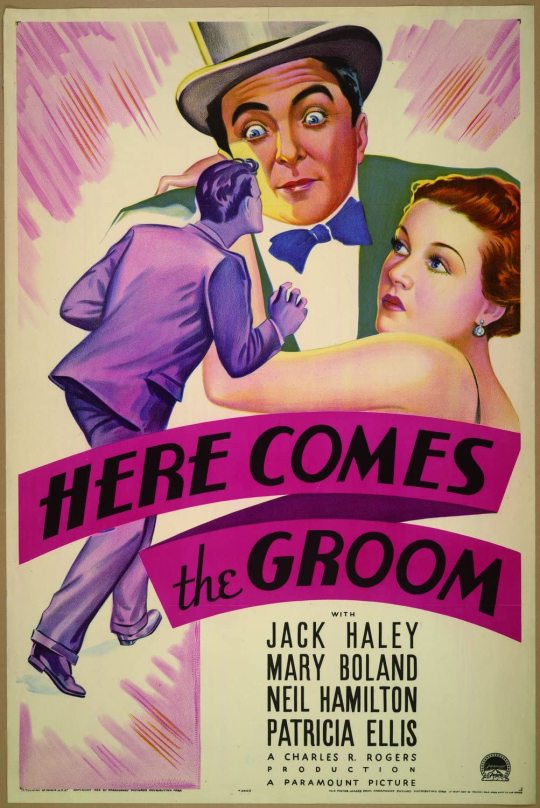

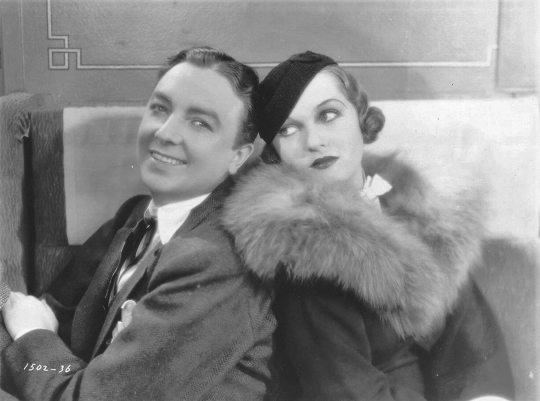
Here Comes the Groom (1934) Edward Sedgwick
April 8th 2020
#here comes the groom#1934#edward sedgwick#jack haley#patricia ellis#isabel jewell#mary boland#neil hamilton#e.h. calvert#sidney toler#arthur treacher#pre-code
6 notes
·
View notes
Text

https://www.madina.co.uk/shop/sweatshirts/1520-sedgwick-ave-beat-street-style-hiphop-black-sweatshirt/
1520 Sedgwick Ave – Beat Street Style HipHop (Black) Sweatshirt
Celebrating the 50th anniversary of HipHop (11th August1973) and the birthplace of HipHop
Madina Design will be releasing The 1520 Sedgwick Ave Beat Street Style HipHop Sweatshirt
Inspired by the Beat Street Movie Poster and withe the 50th anniversary upon us 11th August 2023
📸 @hhbitd

1 note
·
View note